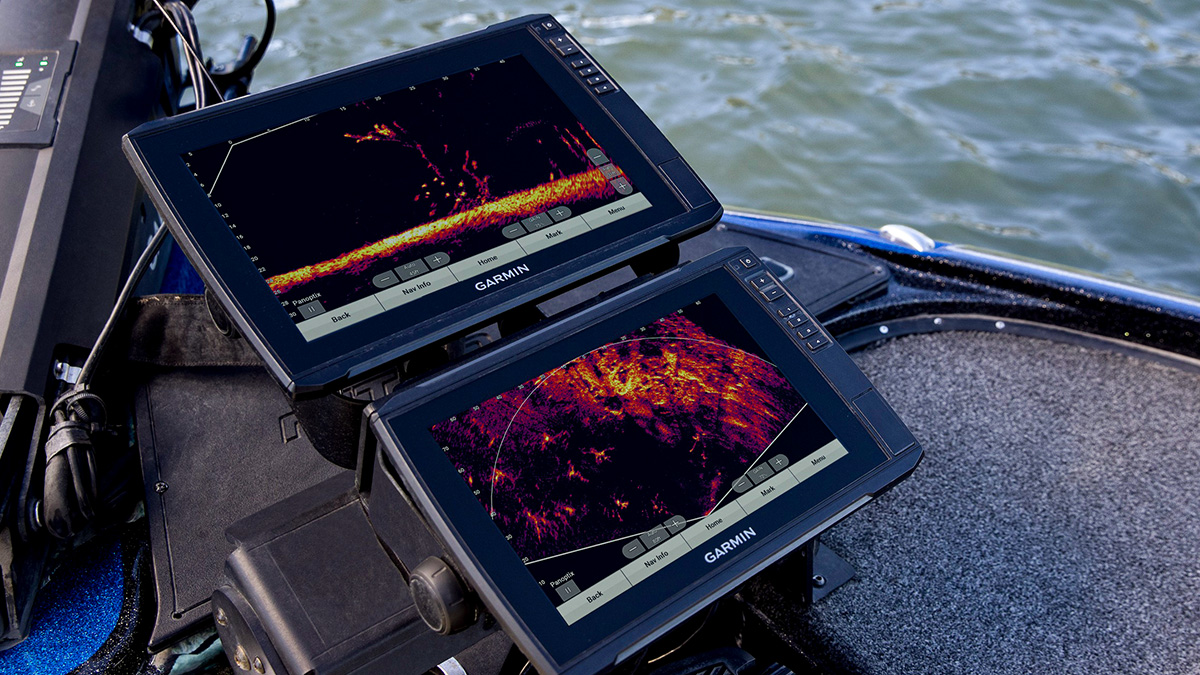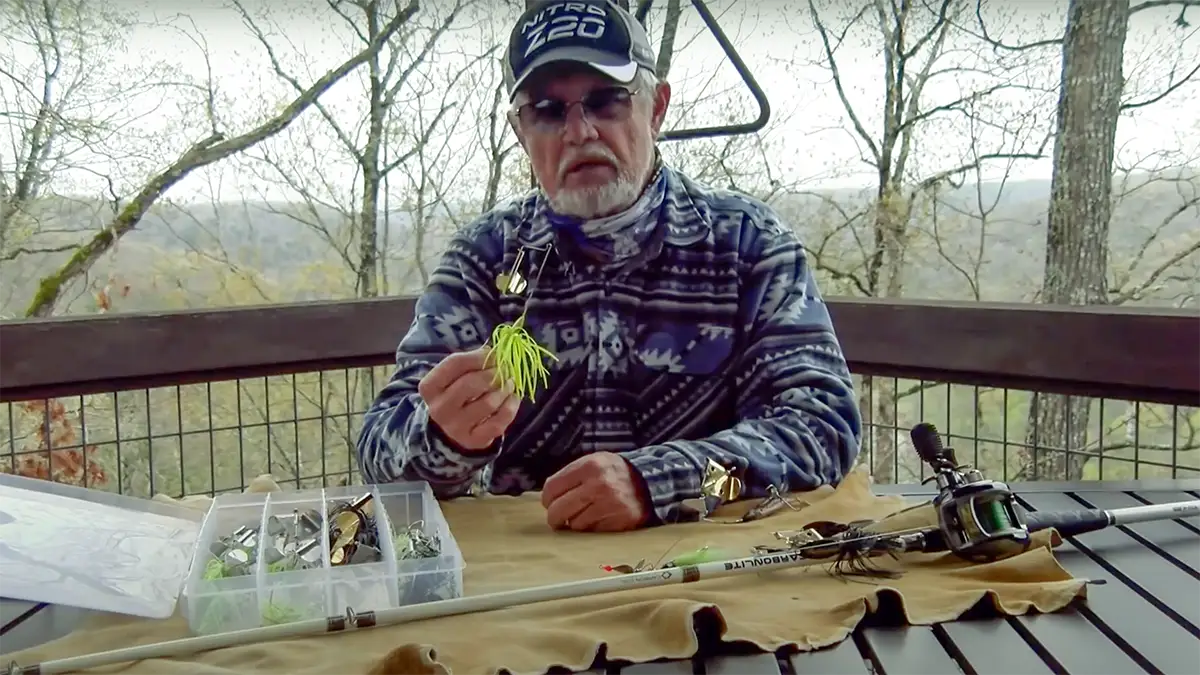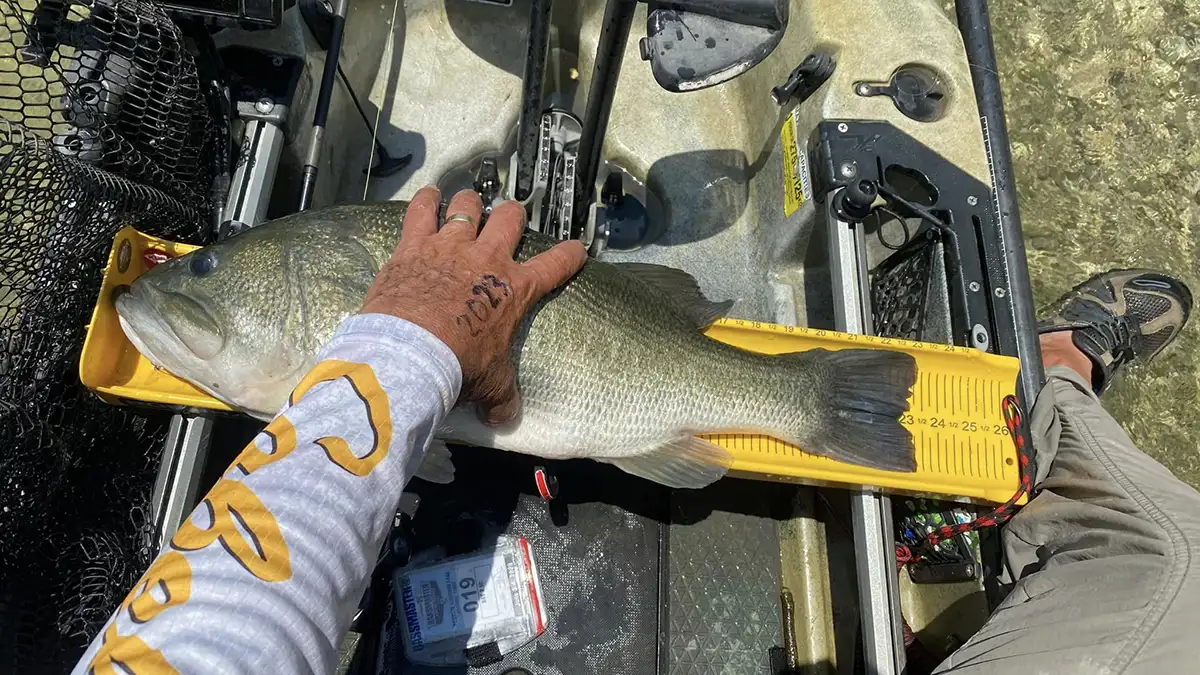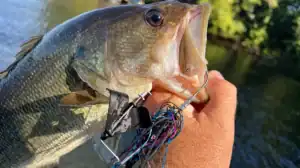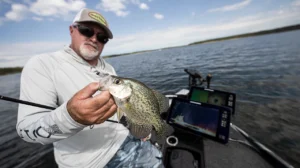The pro bass fishing world has been abuzz for the last month. Declining numbers of participants, the polarizing nature of technology, youth colliding with the old ways of doing things, and everyone’s differing perceptions of what the sport should be have been front and center. I certainly have no interest in diving into that very emotional discussion, which is often lacking critical thought.
But I find the heavily-opinionated reactions to everything around the sport right now interesting, albeit disheartening. It got me thinking about all of the introductions that caused a similar stir around tournament fishing, more specifically the top competitive levels of professional sport fishing. There have certainly been some polarizing tackle and gear introductions in tournament fishing history, no doubt. While many say the new technologies are the worst the sport has seen, I don’t lean that way. I remember very similar reactions to other new items over the years, even dating back to flipping, the buzzbait, and more.

TOURNAMENT SHAKE UP WITH THE TULE DIPPER
Every bass fisherman worth his salt carries a flipping stick in the boat. Because when it comes to wrenching bass out of heavy cover, not many things are better suited for the job. Believe it or not, there was a time when tournament bass fishermen were lobbying to get it banned and blocked because it was too effective at catching bass.
In the early 1970s, a California Delta angler name Dee Thomas was riling up the tournament angling scene in Cali with his long rods known as Tule Dippers. As Thomas told it, he learned to Tule Dip from OC McGee back in the 60s and found it to be a very successful means of pulling bass out of heavy cover. The original Tule Dipper rods were 12- to 15-feet in length and didn’t have a reel. The line was either tied to the tip or on the butt and ran up through an eyelet on the end of the rod.
Around 1974, the tournament fishing scene was just getting going in California. Thomas and his partner brought his modified Tule Dippers to Don Pedro for a tournament. The tournament required a rod “and reel,” so they made a version of the long rods with a reel.
The locals were trying to get them disqualified before they even took off for the two-day event. Well, tournament officials let Thomas and his partner fish. The pair ended up in the top 12 with just their first day weight because they only caught three bass the second day and didn’t think they’d have a chance and threw the fish back. If they had weighed them in, they would have placed third or fourth in the event.
Some locals came over after weigh-in and mocked them, telling them they can bring their long rods anytime they want and get their money taken. Thomas was steaming mad the whole drive home and couldn’t wait for the next tournament. He showed up to the next event with his Tule Dippers, and he and his partner won by 10 pounds. That really got the otherl tournament anglers in a frenzy, saying they were cheating meat-hunters, and flipping wasn’t sportsmanlike.
The tournament director asked Thomas how short a rod he could still flip with and be somewhat competitive. Thomas pulled a 7 1/2-foot Fenwick Striper Rod off the wall and decided he could probably make it work with that. So he started using a modified 7 1/2-foot flipping stick in tournaments. Because he didn’t have the length to just dip the bait into cover from a distance, he started letting the line out until the bait was about at the reel. Then he would pendulum it into the cover and catch them that way. Thomas went on a tear for a few years, winning and placing high in a lot of tournaments out west.
Another West Coast angler, Dave Gliebe, was heading East in 1976 to fish the national B.A.S.S. events. He was a protege of Thomas and had honed his flipping technique, winning everything out West for a few years before making the leap to go pro nationally. In Thomas’s second B.A.S.S. event out east at Bull Shoals Lake in Arkansas in 1975, he blew away the field, and the flipping technique was known and hated nationally at that point. Gliebe followed it up in spring of 1977 on Lake Okeechobee and smoked the competition, winning by 42 pounds in the three-day event. The guy who came in second was Roland Martin, and he happened to be Gliebe’s boater draw the first day. He wouldn’t have finished as close as he did had he not adopted Gliebe’s new flipping technique in Okeechobee’s hyacinth mats.
The rest, as they say, is history. Now 8-foot flipping sticks are normal, and every bass angler knows flipping as a commonly-accepted “manly” way to fish for bass.
THE TOP SECRET BUZZER LURE
In 1974, Rick Clunn started his professional bass fishing career. In 1976, he was fishing a regional contest on Rend Lake and stopped in a local tackle store and found a new bait he had never seen called a Lunker Lure. At the time, there were only inline buzzers made for fishing over grass and such, but this was something different that the fish really loved in open water. He fished it a little in that event and caught one fish on it.
The next week, he was fishing a B.A.S.S. tournament at Cordell Hull in Tennessee. He picked up the buzzbait on the last day of practice, and had two quality fish in quick order. The first day of the tournament, he had 17 pounds and was leading the event on the new Lunker Lures buzzer, one of the two he owned. At the end of the first day, he threw off one of the baits. On the second day, he threw the next one off. The last day he only caught two fish and lost by 2 ounces without his magic buzzbait.
After that event, he quickly stocked up on Lunker Lures. The next spring on Percy Priest, he took the Lunker Lure and fished it on heavy 20-pound line and walked away with the B.A.S.S. Champs title. It didn’t take long before anglers were clamoring to find the secret regional bait no one knew about that caught bass better than everything else. Guys were already grumbling for it to be banned because it was not easy to find.
It became a staple among bass anglers for decades, and yet years later, hardly anyone throws a buzzbait compared to those days in the 80s and 90s. It remains an effective big bass catcher throughout the spring, summer and fall.
THE DREADED ALABAMA RIG
Around 2010, Andy Poss developed a modified umbrella rig delivery system for small swimbaits called the Alabama rig. This rig burst onto the professional scene in 2011, when Paul Elias blew away the field at an FLW Tour Open event on Lake Guntersville in October. The lake was fishing especially tough in practice, and most pros reported they didn’t think it would take 15 pounds a day to win after struggling to catch a few keepers in practice. Elias averaged 25 pounds a day for three days. Most of the top 10 finishers were throwing it by the end of the tournament, with five anglers catching more than 20 pounds the final day on it.
The cat was out of the bag, and everyone was throwing an A-rig going into the winter of 2011 and spring of 2012. I personally had some of the most memorable trips of my life on Kentucky Lake with castable umbrella rigs a friend at Cumberland Pro Lures made. We would bend the wires back to look more like Poss’s Alabama rig, and we boated dozens of bass over 6 pounds and several stripers over 20 pounds on it. It was nutty how good we caught them. For the next two winters, Alabama rigs and their knockoff offspring dominated all of the fishing events around the country. Tournament anglers said using multiple lures was unsportsmanlike, and called for it to be banned in tournaments because they were “forced to throw” it to be competitive.
Fast forward 13 years, and it’s still a very productive winter-time technique and rig. But its not nearly the magic silver bullet everyone made it out to be in the early days.
FORWARD-FACING SONAR AND THE GREAT DIVIDE
And now we have the topic of all discussions around professional bass fishing these days, the dreaded forward-facing sonar. Please read that last part with as much sarcasm as you can muster. I actually don’t dread FFS at all. I’ve found it to be the single best tool fishermen have ever had to understand fish behavior, habits, and habitat. I have learned more about fish in the last five years than I had the preceding two decades. And I can flip and pitch with the best of ’em in the bushes, catch ’em on the ledges better than most, and out-topwater and shallow crank most fishermen I know. None of that three decades of experience and observation has amounted to nearly what I’ve learned about bass, crappie, and bluegill in the last four or five years because of FFS.
The crazy part is forward-facing sonar has been out since Garmin introduced its original Panoptix unit in 2017. So for eight years this technology has been available to fishermen. But in the last 12 months it has apparently become the death of pro bass fishing for a certain population of the angling community.
I shared a video with a good friend Brent Crow with the original Garmin Panoptix back in 2018 on Smith Lake in Alabama. He and I had a heck of a time catching bass and stripers on topwaters showing a lot of people how FFS worked. The original Panoptix had a very wide cone angle and you could see areas more generally than we do now with the successors of Garmin Livescope and the LVS 32 and 34 transducers, which show much narrower but detailed information. Now Humminbird and Lowrance have their versions of FFS, and it’s become a wide-spread technology for anglers fishing big bodies of water to break down small areas quickly and efficiently.
I’m not going to provide arguments one way or the other as to whether forward-facing sonar is good for professional tournament fishing. There are plenty of folks willing to argue with you on either side with tired and simple points to a complex situation, so no need to get into that fray. But it has certainly polarized the angling community around professional tournament fishing. To the point that professional fishing is teetering on brink of losing it’s relevancy with the greater angling community; not because of the technology but because of all the negativity and ugliness surrounding the debate on it.
The tournament organizations are making strides to address anglers’ and fans’ concerns around the tech. But there is no clear-cut answer to a situation as complex as this, as much as folks seem to wish for a simple solution. The good thing is anglers and fans have options, with all three professional tournament circuits taking various stances and new rules related to the use of the technology.
It is interesting that there was no public outcry when Humminbird released Side Imaging, or when Lowrance released Down Scan, or when lithium power advanced, or Power Poles were introduced or any number of technological advances came to be the norm. It does seem that FFS requires a lot of time on the water to hone your skills with, so it’s not an instant upgrade. Folks will argue that Side Imaging and Down Scan are not real-time technologies. Yes, that’s true I suppose. Their updates were 15 or 30 seconds ago, I guess; 5 or 10 seconds if you’re talking about Humminbird 360.
I will say, I’ve never seen another introduction that was used as such a scapegoat to explain all the woes in fishing. I’ve heard everything under the sun in the last month; with folks saying it was destroying fisheries, causing massive losses in tackle sales, and millions of dollars lost in participation at tournaments. What I find funny is apparently groceries being four times more expensive than they were two years ago, gas being over $3 most everywhere still, record unemployment, and tons of people having to work all the time to make up for short-staffing and not having time off to fish has nothing to do with these issues. Then there’s the loss of most of the new anglers that were recruited during COVID shutdowns. Basically, a lot less people are fishing. A lot less people have money to spend on fishing. And apparently we’re to believe FFS is the cause of all of those effects in the fishing industry? Got it.
Who knows where this one goes from here. I have a sneaking suspicion it won’t be quite the detriment everyone wants to make it out to be. People tend to forget that tournament fishing is a small sliver of the greater angling audience. The large majority of us who kayak, wade, bank and fly fish don’t worry much with electronics when fishing like that. So it’s a non-factor for a big portion of anglers who couldn’t even name a single tournament angler. I feel in time, this will become much like all the other controversial introductions where people will calm down and realize the technology wasn’t what was separating anglers. A “lack of perspective” was.
